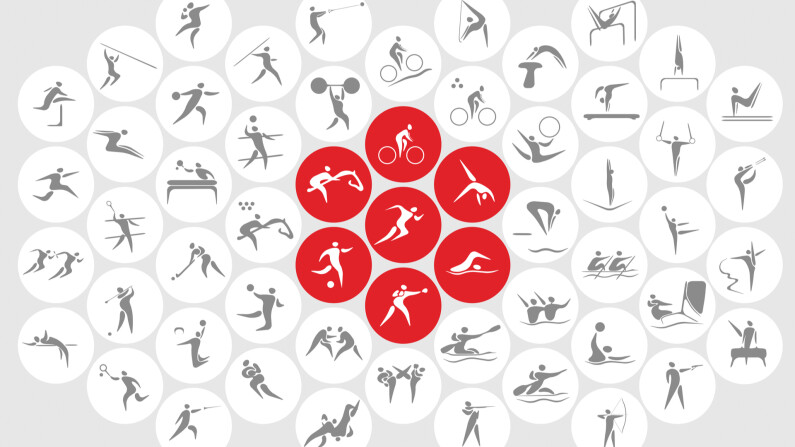If you're under 30 and think you have at least another decade to look forward to while staying young and fresh, we have some bad news for you. The ageing process starts at 30, and by the time you turn 40, this process accelerates.
On average, a person loses 1% of their muscle mass each year by not exercising, and although this number may seem low, imagine how high it gets over the years. That is because although the metabolism slows down by the age of 40, muscle 'decay' is reversed – it speeds up and peaks by the age of 50-60. In short, each year, there is less muscle and more fat.
Let's skip the aesthetic side of the question. These trends not only hurt our appearance, but also other body functions, such as protection, because excess weight inevitably debilitates the immune system. Indeed, the less exercise we get, the less energy we spend. “What's wrong with that?” you might ask. Well, here's the thing, as we age, our body already goes into an energy-saving mode to prolong life, which, in turn, triggers all the processes described above. So, if sport doesn't push the body to function actively, then…
In 2018, American scientists from Boston University discovered that long-term, intense exercise affects a person's DNA and slows the ageing process. After all, as we age, DNA telomeres (tips) thin out and shorten, causing cells to stop dividing and age. Exercise not only helps maintain telomeres, it even lengthens them! Thus, athletes' bodies wear out less, so many live to be 100 years old, and that's not the only way sport helps prolong life and improve its quality.
Why you should exercise after turning 30

According to a study by Boston University, people who exercise have a 10 to 13 per cent reduction in mortality. Of course, no one can force you into an active lifestyle, but we owe it to you to tell you about the benefits it offers. For example, doing sport:
- Reduces the risk of heart failure
Ever notice how your heart starts pounding when you're exercising? That's when it starts pumping blood faster, which improves circulation throughout your body. According to a University of Texas study of men aged 53 and older, oxygen consumption increases by 18% over two years of regular exercise. Along with this, the heart muscle becomes more elastic and, therefore, more enduring.
Cardio exercise, which includes swimming, aerobics, dancing and cycling, is the best way to strengthen the heart. To get the most out of these workouts, you should dedicate at least 30 minutes to them three times a week.
- Prevents osteoporosis
You've probably heard that the elderly are fragile – they easily break bones from a small fall, constantly walk with a dislocation and are afraid of hitting the corner of a table. It is because bones are living tissue, just like muscles and skin. However, bones remain strong due to the bone regeneration process, which slows down by the age of 30, and by the age of 40, bone mass starts to decrease. Unfortunately, it is not possible to increase bone mass after age 50, but it is possible to reduce bone consumption through exercise.
- Improves cognitive function
It's a well-known fact that memory gets worse with age. On the other hand, regular exercise reduces the risk of developing diseases like senile dementia and Alzheimer's. Yoga and stretching have the best effect on a person's cognitive functions, which, along with benefits for posture and joints, also benefit a person's emotional state. The result is a better quality of sleep and lower stress levels, which, in turn, directly affect our ability to remember, concentrate, and process information.
Sports that prolong youthfulness

Previously, it was thought that swimming and jogging were the most effective sports for older people. However, scientists have recently discovered that interval swimming and jogging training sessions combined with weight training, aerobics and sports aimed at developing muscle and joint flexibility – such as stretching – are much more effective. However, researchers from the University of Alabama believe that the best choice for people over age 50 is low- or self-weight training, which helps maintain balance in bone and muscle tissue, but also increases the body's defence functions and improves mood. In addition, such exercises are the safest, with only a 0.1% risk of injury.
For young and middle-aged people, however, the universal sports that are sure to benefit and flourish your body are:
- Sports with a racket
These include squash, tennis and badminton, which scientists believe activate metabolic and protective processes in the body through constant movement and utilising all muscle groups. Resultingly, the risk of death from cardiovascular diseases for those engaged in such sports gets reduced by as much as 56%! For the record, no other sport has such a significant impact on the heart.
- Aerobics
Aerobics means low-intensity, steady exercise – for example, dancing, gymnastics, acrobatics, or jogging. Aerobic exercise also reduces your risk of cardiovascular diseases by 35%. Moreover, even if you don't dance, or run, just going for a long walk is fine.
- Swimming
According to Harvard scientists, swimming is great for losing weight and strengthening your heart if you're not used to regular exercise or don't know where to start. It is also an ideal sport for those who have survived an injury or surgery because the injury risk in swimming is minimal. Furthermore, the non-intensive and smooth work of all the muscles in the process aids tissue recovery.
- Cycling
During cycling, muscle groups such as the abdominal muscles, hips, arms, and back work particularly hard. Cycling also improves your balance, flexibility, and production of endorphins, which give rise to feelings of euphoria and happiness. Indeed, according to some studies, cycling 2-3 times a week prolongs life by 15% and reduces the risk of cancer.
How much exercise does it take to stay young and healthy?

All recommended intensity and frequency of exercise are, of course, average and approximate. The truth is that you should always calculate individually the time you allocate for doing sport. It would be best if you set goals determined by the level of fitness and stamina you want to achieve. Additionally, it would be best if you considered your work schedule and general health. You don't have to follow a plan or work out at the gym for three hours at a time – exercise should be moderate and regular to bring real benefits. For example, you could replace a trip to the gym with a daily climb up and down the stairs at home. The key is to ensure that your total physical activity time is at least 90 minutes a week; otherwise, you won't see any results.
Usually, positive changes in the immune system and musculoskeletal mass occur with a moderate workout of 150 to 300 minutes per week. Working out for longer than 350 minutes does not add any extra benefit, as you might think, but rather threatens to nullify it, especially in older age, when the body does not have enough energy left. Remember that everything is good in moderation – both rest and activity. And most importantly, listen to your body!
Share this with your friends!






Be the first to comment
Please log in to comment